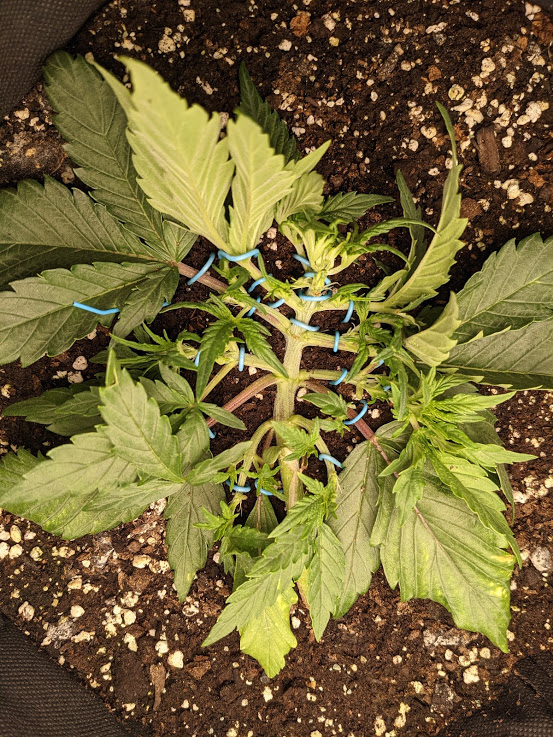Plant training: Difference between revisions
No edit summary |
|||
| Line 1: | Line 1: | ||
| − | The main concept of training a plant is to shape the canopy and stems in a way that will maximise yield, for example, the upper canopy can have fan leaves that shade bud |
+ | The main concept of training a plant is to shape the canopy and stems in a way that will maximise yield, for example, without training the upper canopy can have fan leaves that shade bud-producing stems, via training it is possible to force lower branches to grow away from more dense areas to receive more light and airflow. This allows the plant to be more open, giving each branch more growing room and a chance to branch further. |
==LST techniques == |
==LST techniques == |
||
Revision as of 00:16, 29 January 2021
The main concept of training a plant is to shape the canopy and stems in a way that will maximise yield, for example, without training the upper canopy can have fan leaves that shade bud-producing stems, via training it is possible to force lower branches to grow away from more dense areas to receive more light and airflow. This allows the plant to be more open, giving each branch more growing room and a chance to branch further.
LST techniques
LST should be applied as soon as the plant has 2 nodes as this is when it is flexible and not brittle. One of the best options with LST is to try to make the main stem grow sideways so that most of the branches aren't in the shadow of the main canopy as they would be if the canopy is directly above.
It may be necessary to adjust your LST every day or every two days when the plant is growing quickly
Pining stems down
Paper clips can be used to pin the stem down as it grows. This greatly reduces the height of the plant by training branches to grow laterally. This method is better suited to more compact mediums like soil as pins require some friction to stay in place. Pinning should start as soon as there is a long enough stem to pin. You can grow a seedling in low light to increase the stem stretching in the seedling phase. This can increase the inter-nodal distance giving your branches more space later on in flowering.

Here the plant is kept low to the soil with blue paper clips. See how the clips can be used to twist the stem as it grows so that all nodes can emerge parallel to the soil
Ponytailing
Ponytailing is the process of tying leaves up in a bunch together to remove the shade they create. This also leads to the ponytailed stem receiving less light and stretching more as a result. This can be done with small cable ties or paper clips
Defoilating
Simply the process of removing access leaves. If there are too many leaves the humidity can become too high and also fan leaves that do not create buds can shade other branches that will bear buds. Take care to not prune when the plant is a few weeks into flowering as this will negatively impact yield.
HST techniques
Topping
Mainlining
By trimming the top of the main stem one can create a manifold, this forces the plant to split resources between the remaining branches creating a more even canopy. This should be done when the plant a) has at least three nodes, b) when it is healthy and c) while it is still vegetating. After creating a manifold LST should be applied to maintain the shape of the plant